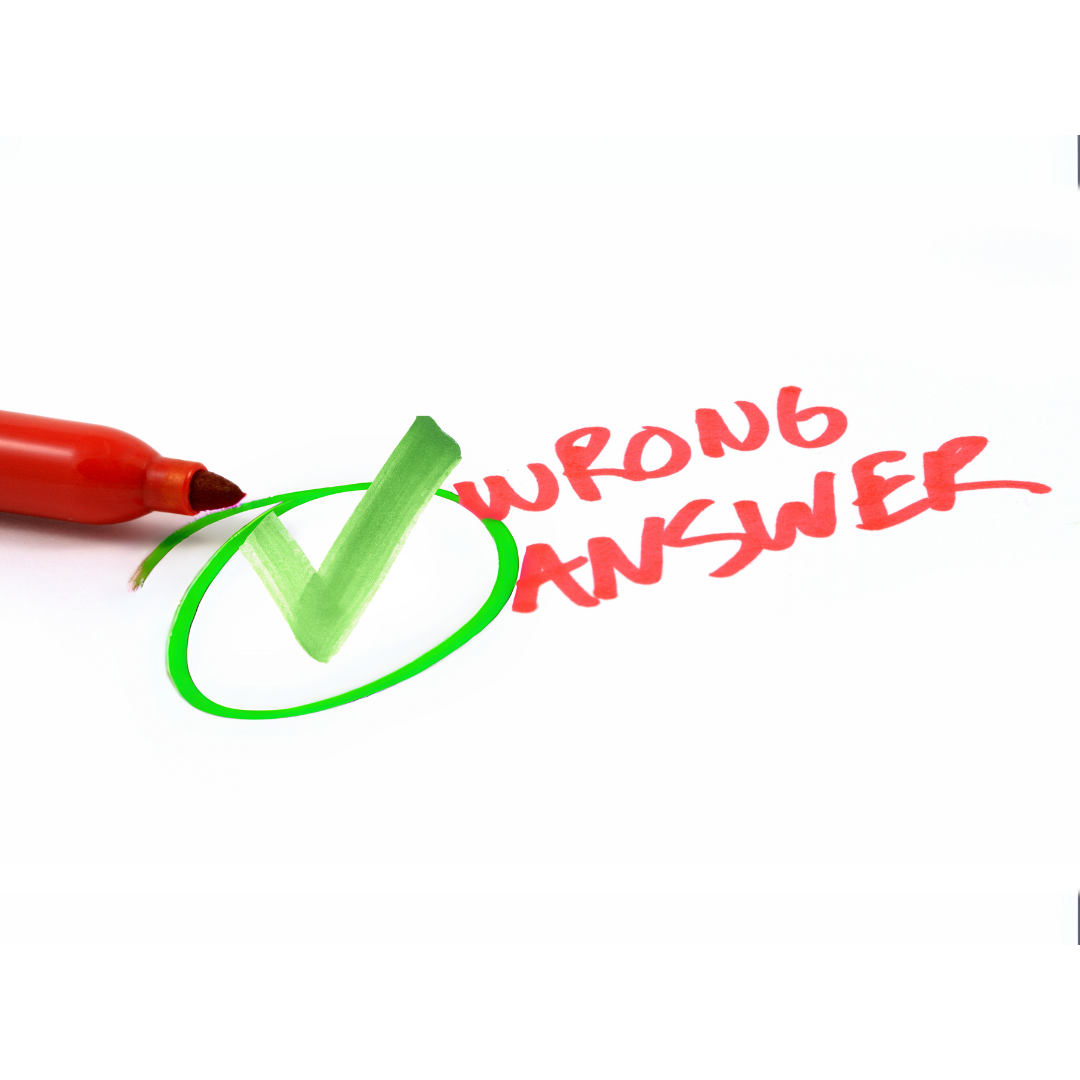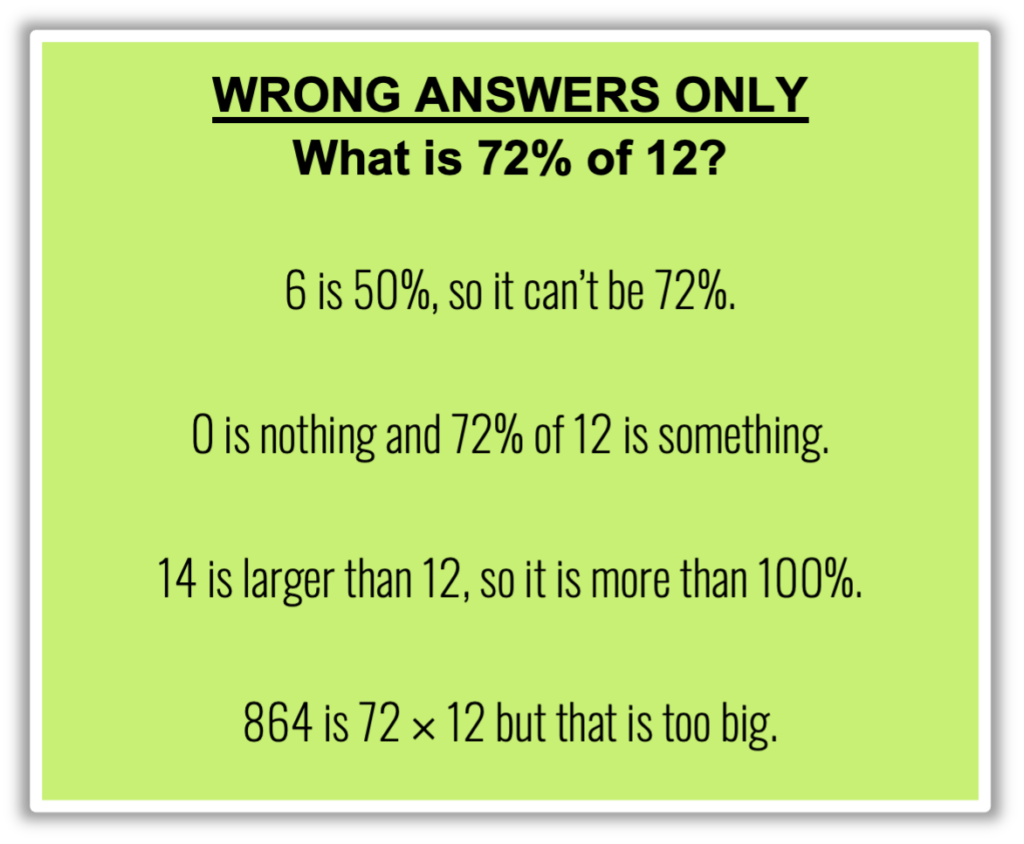Wrong Answers Only

by Zuzka Blasi
My favorite acronym in the math classroom is Mistakes Allow Thinking to Happen. I want my students to make mistakes and see the value in those mistakes. One way I encourage this attitude is Wrong Answers Only, a powerful and simple discussion activity that elicits generalizations and pushes students to think in a different way about math problems. By encouraging students to supply and explain incorrect answers, you can push them to change their problem solving stance from a focus on rote calculation to a consideration of the problem space.
What is it?
As a whole class activity, present a problem. The problem should be straightforward enough that features of the solution are apparent without actually solving it. The task should be clearly explained and identified: students are expected to provide incorrect solutions and rationale for their answer. When introducing this activity, it can be helpful to model both elements. As students become more familiar with the task, teacher-provided wrong answers for which the students explain the “why” can guide and support deep thinking about particular mathematics involved in the problem.
Where is the math?
The most important part of this activity is the student explanations of their wrong answers. When they say how they know their answers are wrong, they can use estimation, make generalizations about the problem and about math, and demonstrate their knowledge of erroneous strategies.

Why focus on wrong answers?
There are many mathematical reasoning skills involved in supplying a wrong answer that can come in handy when students are calculating a “right” answer. Estimation of a correct answer is an important exercise, particularly when using a calculator or engaging in complex problem solving. Formulating generalizations about a problem can support students to think more deeply about a problem type, making connections to work they have done before, and elicit ideas and problem-solving strategies they can bring to bear on an unfamiliar problem. Some wrong answers are demonstrations of incorrect solution approaches, which can be very helpful for students who are developing their understanding and/or struggling with common errors or misconceptions. Furthermore, student misconceptions may be surfaced by their wrong answers and/or their explanations.
Does this activity support diverse learners?
Discussion of wrong answers is beneficial for all learners. A student who is not yet able to produce the right answer will often be able to observe enough characteristics of the problem to generate a wrong answer. They can actively participate in this activity and also demonstrate the knowledge that they do have to bring to bear, encouraging engagement with unfamiliar problems. As rationale for wrong answers is shared, students will learn from the ideas of their classmates and develop deeper mathematical awareness. The mathematical discourse and use of vocabulary involved are supportive for students developing their English proficiency.
I wrap up each class meeting with this activity. I can usually get about 10 minutes of excellent discourse for 30 seconds of problem-writing effort—a great return on investment! My students revel in the opportunity to show their knowledge and we often laugh about an interesting or silly wrong answer. I hope you will consider giving this activity a try.

Zuzka Blasi is an adult education instructor at Middlesex Community College in Bedford, MA. Zuzka teaches ABE and HSE math classes and also supports teachers learning to use the Modern Classrooms Project approach to instruction.
